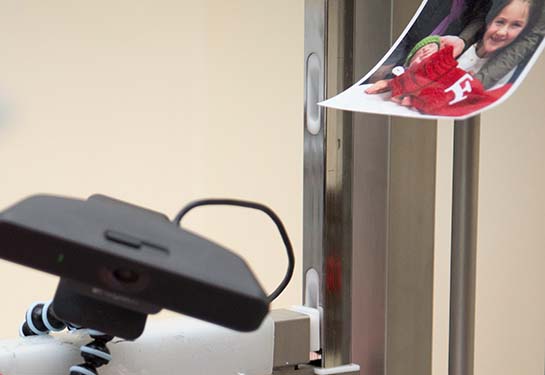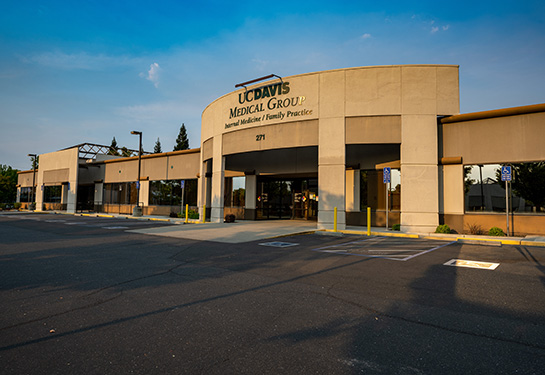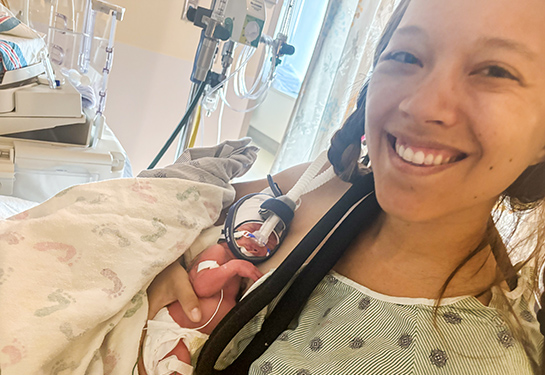Watching video feed of hospitalized baby improves pumping experience
Parents who used videoconferencing technology to view their hospitalized baby reported an improved pumping experience while expressing milk for their premature infant. Videoconferencing also helped the whole family connect to their infant in the Neonatal Intensive Care Unit (NICU). These findings were published in Breastfeeding Medicine this month.

“Breast milk feeding is an essential component of care for the hospitalized premature infant, but it can be challenging due to factors including low milk supply, the need to express milk instead of feeding directly from the breast, as well as the stress and anxiety for new parents who are physically separated from their premature infants in the hospital environment,” said study lead author Adrienne Hoyt-Austin. “Our study explored the experience of pumping milk while watching one's hospitalized baby with videoconferencing.”
The UC Davis Health study enrolled parents who used FamilyLink when they are not at the bedside in the UC Davis NICU. FamilyLink is a videoconferencing program which gives families the option to see their baby through a secure connection from a home computer, tablet or cellphone 24/7.
The team interviewed participants who pumped breastmilk while using FamilyLink to view their infant and those who pumped without videoconferencing.
Participants had given birth to an infant who was less than 34 weeks gestational age and was admitted to the UC Davis NICU.
In our interviews, we heard over and over again that that videoconferencing improved the pumping experience and gave motivation to continue to provide breast milk for their hospitalized infant.”—Adrienne Hoyt-Austin
In a one-on-one interview, participants were asked 14 open-ended questions regarding their breast milk pumping experience. The qualitative analysis identified four common themes. It showed that videoconferencing:
- Provided bonding and connection. Participants felt “more of a connection” and “more of a bond” when seeing their hospitalized infant on video.
- Provided motivation to pump. One participant said that seeing their baby is a “visual reminder that this is what I’m doing this for.”
- Reminded participants that they were separated from their baby. One participant said, “I became just kind of guilty watching, feeling like I should be there instead of away.”
- Connected the whole family to their baby. Participants reported that videoconferencing helped introduce new family members to the baby and explain the complicated issue of neonatal hospitalization.
“In our interviews, we heard over and over again that that videoconferencing improved the pumping experience and gave motivation to continue to provide breast milk for their hospitalized infant. Participants also felt that seeing their baby while pumping strengthened the bond between the family with their newborn,” said Hoyt-Austin. “We hope that the use of videoconferencing for NICU parents will become a more widely available tool in NICUs that can help new parents in their breastfeeding journey.”
The study co-authors are Iesha Miller, Kara Kuhn-Riordon, Jennifer Rosenthal, Caroline Chantry, James Marcin, Kristin Hoffman and Laura Kair, all of UC Davis Health.
The project was funded by the Children’s Miracle Network at UC Davis and the Clinical and Translational Science Center Highly-Innovative Award (UL1-TR001860). The researchers were supported by HRSA T32HP30037 grant, NIH’s Building Interdisciplinary Research Careers in Women's Health (BIRCWH) award (K12 HD051958) and Eunice Kennedy Shriver National Institute of Child Health and Human Development (NICHD) K23HD1015-50 grant.





